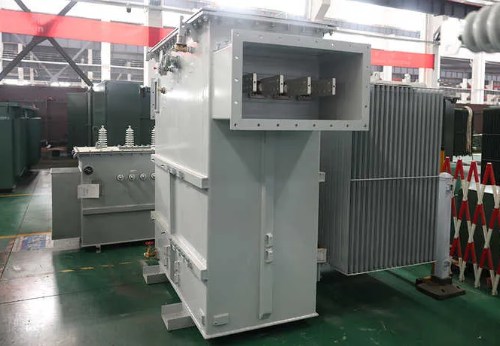Electronic Components Supplier | Transformers, Inductors, Inverters
Liquid-Filled Transformer: A Reliable Solution for Power Distribution
Introduction
Liquid-filled transformers are widely used in electrical power systems due to their efficient cooling capabilities, durability, and ability to handle high loads. These transformers use dielectric fluids—such as mineral oil or synthetic esters—to provide insulation and dissipate heat. This article explores the working principle, types, advantages, and applications of liquid-filled transformers in modern power networks.

Working Principle
A liquid-filled transformer operates by immersing its core and windings in a dielectric fluid, which serves two primary functions:
-
Insulation: Prevents electrical breakdown and arcing between components.
-
Cooling: Absorbs and dissipates heat generated during operation, ensuring stable performance.
The fluid circulates naturally (in oil-immersed transformers) or through pumps (in forced-cooled transformers), maintaining optimal temperature levels.
Types of Liquid-Filled Transformers
-
Mineral Oil Transformers – The most common type, using highly refined petroleum-based oil for insulation and cooling.
-
Silicone Oil Transformers – Used in high-temperature environments due to their superior thermal stability.
-
Ester-Filled Transformers – Utilize biodegradable synthetic esters or natural esters, making them eco-friendly and fire-resistant.
-
Askarel Transformers – Previously used for fire safety but phased out due to environmental concerns (PCBs).
Advantages of Liquid-Filled Transformers
-
Higher Overload Capacity: Can handle temporary power surges better than dry-type transformers.
-
Longer Lifespan: Proper cooling extends operational life (often 30+ years).
-
Compact Design: More power-dense than air-cooled alternatives, saving space.
-
Better Heat Dissipation: Liquid cooling ensures efficient thermal management.
-
Lower Noise Levels: Quieter operation compared to dry-type units.

Applications
-
Utility Power Grids: Used in substations for voltage regulation.
-
Industrial Facilities: Support heavy machinery and manufacturing plants.
-
Renewable Energy Systems: Integrate with solar farms and wind power plants.
-
Urban Distribution: Ideal for underground installations due to their compact size.
Conclusion
Liquid-filled transformers remain a cornerstone of power distribution due to their reliability, efficiency, and adaptability. With advancements in biodegradable fluids and smart monitoring systems, they continue to evolve, meeting the demands of modern electrical infrastructure.





